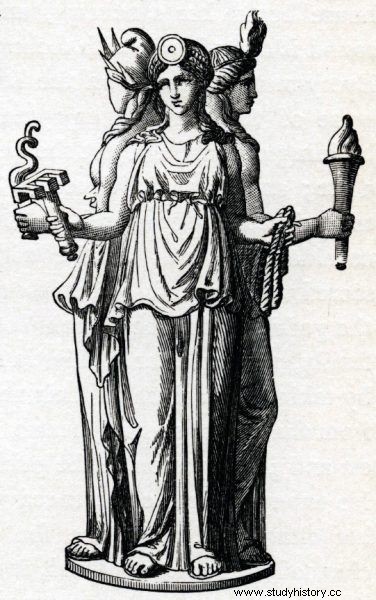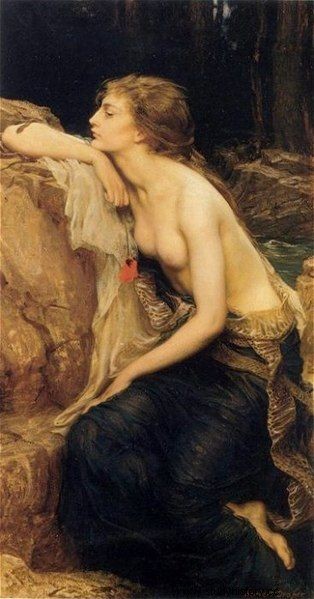Vampire - a character widely used in culture. We owe his painting to the famous book "Dracula" by Bram Stoker. However, Dracula was not the father of a vampire family, and his ancestors should be sought wherever people feared sudden death - also in antiquity.
When trying to define a vampire, it is assumed that it is the ghost of a person who died tragically an animated corpse that returns to harm people . The transformation into a vampire can be presented as reincarnation - the soul of the deceased enters a new body or transforms into an existing one, thus giving him a new life, while maintaining his identity and independence. Already in ancient Greece, people transformed into vampires were considered restless spirits of the prematurely dead . Plato believed that their soul was:
out of fear of the invisible, of the other world, [...] as they say, he wanders around monuments and graves, where some soul-like shadows, visions [...] are not [are] the souls of brave people, but evil, who have to wander in such places, repenting for their first life:evil.
Bloodthirsty beauties
In ancient culture, vampires were portrayed as female demons accepting humans character to be able to prey on mortals. They were the retinue of the goddess of the underworld and magic - Hecate, and they were known as empus, lamy, striga and succubus . Their job was to seduce men, feed on the blood and flesh of their victims, and kill, kidnap or eat children left alone.

The vampires of antiquity were the retinue of the goddess of the underworld and magic - Hekate.
The three-figurative image of Hecate from the crossroads.
All of them had the ability to transform into creatures associated with the demons of the night. The ability to make such a transformation suggests that mythological mermaids can also be included in the group of vampires. . Already in the poem of Homer, these women-birds lured sailors to their doom and collected their bones on their island.
Walking dead
There is also a famous story by the Roman historian Flegon of Tralles from the 2nd century CE, who described the story of a prematurely deceased girl. Rising from the grave, she visited at night the young man who lived in her parents' house. When it became known, the girl's family decided to wait for her in hiding, wanting to welcome her and take her in their arms. She, however, sadly pointed out the cruelty of their curiosity and announced that she must now return to her destination, after which she fell dead. When the family opened the tomb the next day, they found it empty.
Protective magic
The ancients were not left to fend for themselves in the fight against the living dead. In ancient Rome, there was a college of priests tasked with fighting vampires, as well as a legal code that forbade the dead to be left in places exposed to lamias and strigoi.

Vampires of antiquity were portrayed as beautiful women to lure and kill their victims.
Lamia (1909), Herbert James Draper
According to Ovid, people in the fight against vampires had on their side the goddess of doors, hinges and health - Carna. The striga's attack on babies at home could also be prevented by touching the door frame three times with an arbutus leaf (a type of plant from the heather family), sprinkling the threshold with special water, sacrificing the raw guts of a two-month-old owl and saying a special prayer:
Birds of the night, spare the internal organs of the children:a small victim comes from a small child.
Take, I pray, heart for heart, guts for guts. We are giving this life to you for a better life.
As we can see, the fear of the undead was a very important element of the ancients' everyday life. It is remarkable that, after more than two thousand years, our images of vampires are not that much different from those of antiquity.
Bibliography:
- E. Petoia, Vampires and Werewolves. Sources, history, legends from antiquity to the present day, Krakow 2004.
- N. Suckling, Wampiry, Warsaw 2010.
- W. Warde Fowler, The Roman Festivals oft he period of the Republic. An introduction to the study of the religion oft he Romans, Port Washington, N.Y./London 1969
